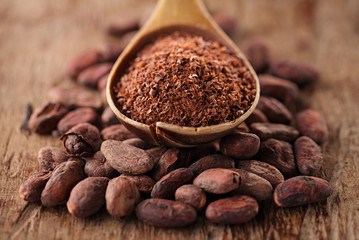Cocoa
Cocoa, derived from the seeds of the cacao tree (Theobroma cacao), is a key ingredient in chocolate production and has significant economic, cultural, and nutritional value. Native to the tropical regions of west Africa like Cote d’Ivoire, Nigeria and Ghana , cocoa has a long history of cultivation and use, dating back to ancient civilizations such as the Mayans and Aztecs.


CropCompass process cocoa for export and uses locally and overseas. Cocoa tree is a small, evergreen tree that grows to about 4–8 meters (13–26 feet) tall. It has large, glossy leaves and produces colorful pods ranging from yellow to orange, red, or purple. Each pod contains 20-50 seeds, commonly known as cocoa beans, embedded in a sweet, mucilaginous pulp.
Harvesting
Cocoa pods are harvested by hand using machetes or knives. Harvesting occurs throughout the year, with peak seasons varying by region. Once harvested, the pods are opened, and the beans are extracted for processing.
Processing
Fermentation
Fermentation is a crucial step in developing the flavor of cocoa. Beans are placed in shallow containers and covered, allowing natural microbial processes to occur over 5-7 days. This process transforms the beans from bitter to more palatable, with a complex flavor profile.
Drying
After fermentation, beans are dried in the sun or using mechanical dryers. Proper drying reduces moisture content to about 7%, preventing mold growth and preparing the beans for storage and shipping.
Roasting and Grinding
Dried beans are roasted to develop their flavor further and then cracked to separate the nibs from the shells. The nibs are ground into a paste called cocoa liquor, which can be further processed into cocoa butter and cocoa powder.

